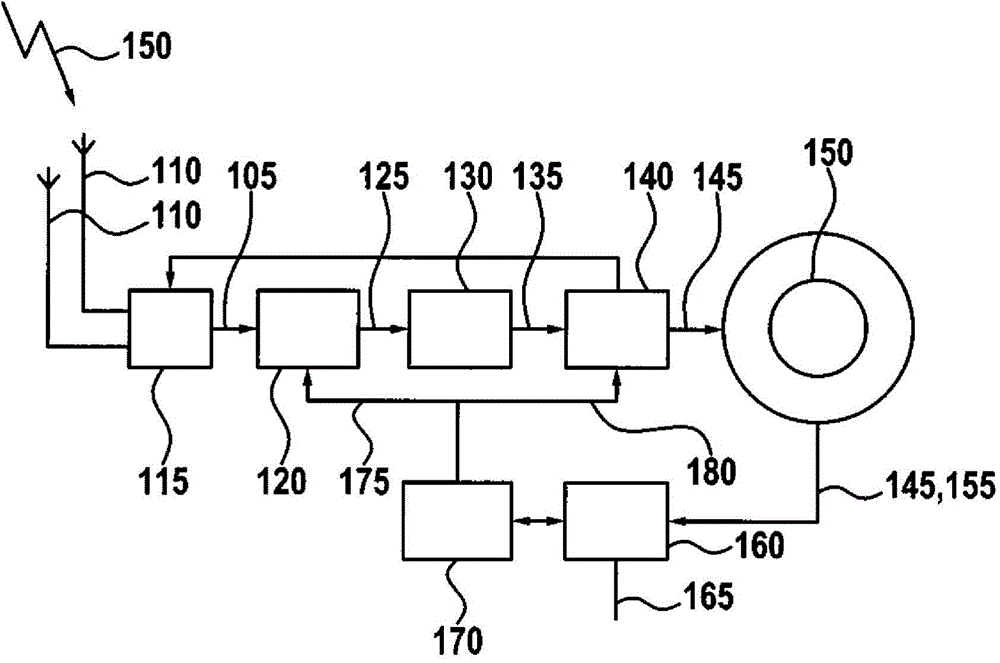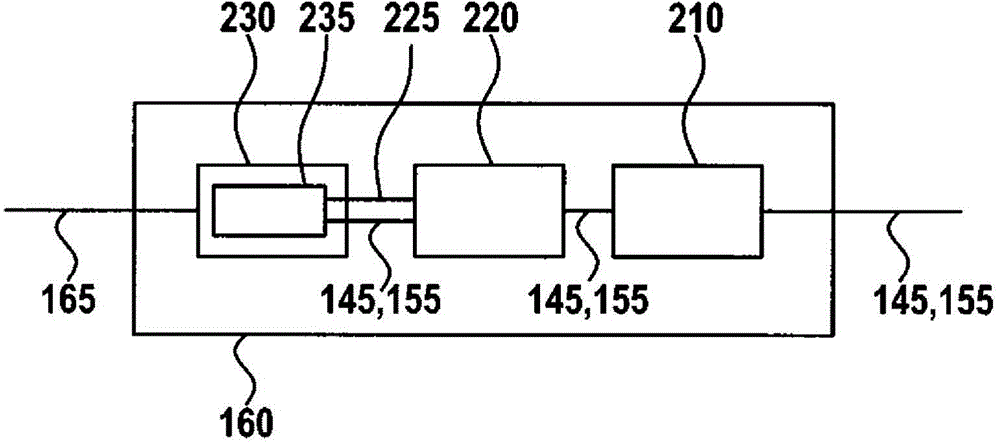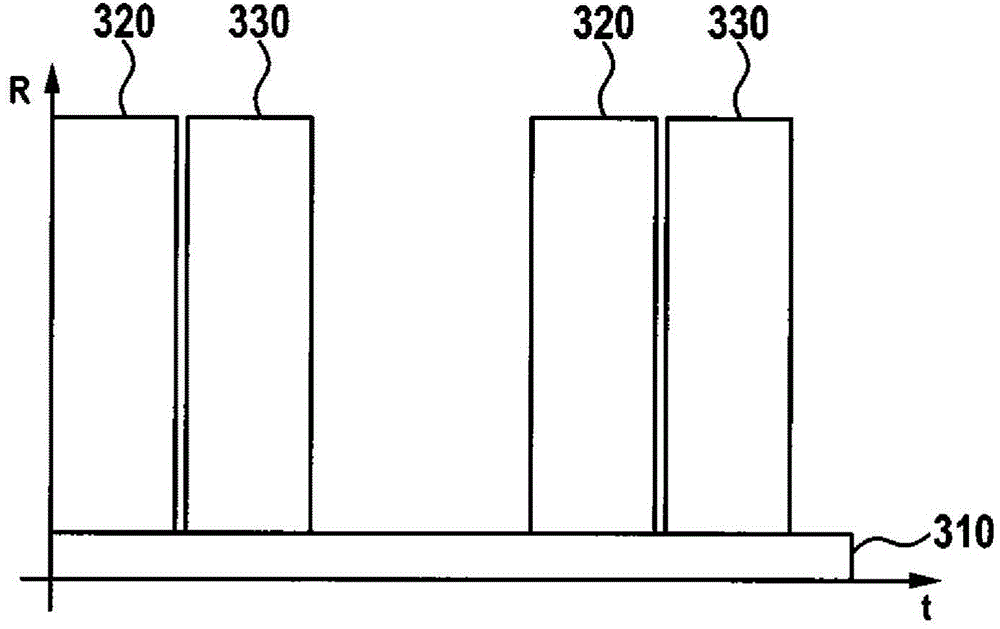Method and device for processing radio signal
A radio signal and preprocessing technology, applied in the field of computer programs, can solve the problems of improving reception quality and inability, and achieve the effects of improved processing and high cost performance.
- Summary
- Abstract
- Description
- Claims
- Application Information
AI Technical Summary
Problems solved by technology
Method used
Image
Examples
Embodiment Construction
[0032] In the following description of several advantageous exemplary embodiments of the invention, the same or similar reference symbols are used for elements that are shown in different figures and have a similar effect, wherein a repeated description of these elements is avoided.
[0033] figure 1 A block diagram of a device 100 for processing a radio signal 105 according to an exemplary embodiment of the invention is shown. The radio signal 105 is here received by one of the plurality of antennas 110 , which is selected as the receiving antenna by a corresponding antenna selection switch 115 . The radio signal 105 received by the corresponding antenna 110 is subsequently tuned into an HF (HF: High Frequency) processing unit 120 for HF processing, for example aliasing with a corresponding carrier frequency to obtain an intermediate frequency signal or a baseband signal. The signal 125 obtained in the RF processing unit 120 is digitized in an A / D converter, wherein the proc...
PUM
 Login to View More
Login to View More Abstract
Description
Claims
Application Information
 Login to View More
Login to View More - Generate Ideas
- Intellectual Property
- Life Sciences
- Materials
- Tech Scout
- Unparalleled Data Quality
- Higher Quality Content
- 60% Fewer Hallucinations
Browse by: Latest US Patents, China's latest patents, Technical Efficacy Thesaurus, Application Domain, Technology Topic, Popular Technical Reports.
© 2025 PatSnap. All rights reserved.Legal|Privacy policy|Modern Slavery Act Transparency Statement|Sitemap|About US| Contact US: help@patsnap.com



